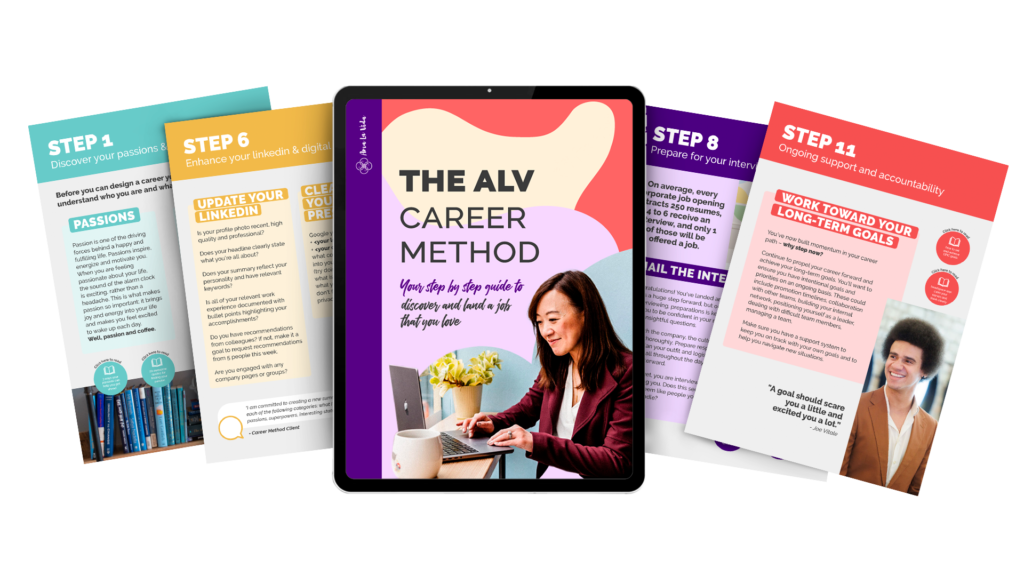5 Things To Do Now Instead of Quitting Your Job

5 Things To Do Now Instead of Quitting Your Job
By now, you’ve probably heard of The Great Resignation – 33 million Americans quit their job since the spring of 2021. However, this doesn’t mean everyone quit their jobs to go live off the grid and never work again. The reality is, most of us still need money to pay the bills, buy groceries, pay off student debt, and continue doing the things we like to do.
In those moments of burnout, stress, and anxiety, quitting your job might feel like the only option to feel better. In some cases, this may be true. Your job may be a toxic workplace, you might have other responsibilities like being someone’s full-time caretaker, you know exactly what you want to do next, or you have the financial ability to quit without something else lined up.
In any other case, quitting your job, albeit seemingly satisfying in the short-term, may not be the only option. Today, we’ll talk about 5 things you can do instead of quitting your job.
1. Set and Honor Boundaries
It’s easy for us to blame our jobs for not having enough time to sleep, pursue our hobbies, or spend time with our families. Rightly so, in a way, because American work habits and work culture can be really unhealthy in many ways. But, there’s also some responsibility we need to take as individuals in our own stress and burnout, and that comes with setting and honoring our own boundaries. Now more than ever, it is up to us to decide when work starts and when it ends. For many of us, we don’t have a commute that bookmarks our day, and our offices are just a few steps away from our living room.
Take some time to reflect and define your boundaries before you think about quitting your job. You can start by identifying your needs such as sleep, leisure, personal relationships, hobbies, alone time, and exercise. What do you need and how much? What would an ideal day look like and what boundaries do you need to make that ideal day possible? If you need more ideas on how to define your boundaries, read this or talk to your coach about it! Your coach can support you in defining what’s important to you, naming boundaries, and staying accountable to yourself!
2. Change Your Environment
In order to grow, flowers need soil, sun, and water. But not all flowers are the same. Some need a lot of light and little water, and others need little light, a lot of water, and extra nutrients in the soil. We are a lot like flowers; we all need different types of needs to be met to create the right environment for us to thrive. Historically, traditional 9-5 jobs haven’t been conducive to the idea of autonomy and flexibility which means many of us are stuck trying to fit into an environment that doesn’t work for us and doesn’t allow us to grow.
Now that you’ve identified your boundaries, go a step further by using them to define your ideal environment at work and in your personal life. What is your soil, sun, and water ratio?
To decide that, consider these questions:
- What types of environments allow you to focus and be productive?
- Where do you find inspiration?
- How do you recharge?
- What drains your energy?
- In which experiences (professional or personal) have you felt like you were thriving, or at the top of your game? Break that down – what did this look like? Feel like? Who were you with?
After defining your ideal environment, communication is key. Talk to your manager and colleagues about your needs and how they can support you and how you will in turn support them. A thriving garden also needs the tender care of a gardener, so continue to replenish yourself and keep your ideal environment ideal by intentionally making decisions that help you thrive every day.

3. Redesign Your Role
I strongly believe that the “dream job” doesn’t exist, but rather that we have the power to mold and create our ideal role by leaning into our strengths and interests and implementing changes in the work we do and the way we do our work.
Redesigning your role might look like taking on new challenges that are more aligned with your interests and strengths, delegating tasks that you don’t want to do or don’t need to do to other team members, or a combination of both. It can also look like setting up new structures and processes to make your workday flow – focusing on highlighting your strengths and supporting you with the things you don’t like to do or aren’t great at.
Some of this you can start tomorrow: make a list of the tasks and responsibilities that your role consists of including everything, big or small. Then circle the things you want more of and underline the things you want less of. How can you capitalize on the circled tasks? How can you make the underlined tasks less painful?
Take a designer’s mindset: hypothesize, prototype, test, and iterate. This might not be a one and done deal, but rather a continuous discovery process until you get to what feels right.
4. Lean into Social Capital
Social capital is “the networks of relationships among people who live and work in a particular society, enabling that society to function effectively.” At your current job, you have some amount of social capital, whether you’ve just started or you’ve been there for a while. People know you, they’ve seen you work, they’ve collaborated with you, and they know how you show up.
Having social capital gives you a leg up when it comes to exploring something new. This could look like getting involved in some cross-collaborative projects with other departments, shadowing someone in a whole different role within your company that interests you, or talking to your manager about your career path and seeking their support and planning for a switch within your company.
Why does this work? For you, it makes these exploratory conversations easier to have when you’re having them with people with whom you have a relationship or some common ground. It isn’t easy to get in front of a person when job searching, and now, you have a whole community of people who already know you that you can start your exploration with.
For your company, it could be a money saver! The average company spends $1,500 per employee for the onboarding and training process. This also comes with a risk of people not being the right fit or not staying long enough to give a return on investment. You, on the other hand, are already a trained and committed employee. They know who you are and how you work so the risk of ROI is much smaller right off the bat.
5. Redefine Your “Why” and Choose Non-Negotiables
Many of my clients are looking for a job that gives them everything: mental stimulation, community, financial stability, creativity, flexibility, autonomy, fun, growth, and fulfillment. That kind of job might come around once in a while for a little while, but it’s not the norm and it’s not forever. Besides, it’s much more empowering to hold the belief that you can actively create a fulfilling, stimulating, and creative life rather than believing one job can give that for you.
Instead of quitting your job, redefine your “why.” What motivates you to go to work? Does it offer you financial stability and benefits? Do you have a great team and community at work? Do you have a flexible schedule? Decide what your non-negotiables are from these things (read: they can’t all be non-negotiables) and use those to define your new why.
Once you have a new “why” for your work, you can re-engage in your role with those priorities in mind and it allows you to fill the other cups elsewhere. For example, does your job offer your flexibility and financial stability but not a lot of space for creativity? Sign up for some art classes. Does your job offer you mental stimulation but not financial stability? Set boundaries and find additional streams of income.
The point is, your job isn’t and can’t be everything, and we spend a lot of time giving our jobs all the power. At Ama La Vida, we believe we all have the power and resources to create the life we love. It might take a lot more work and intention, and maybe even a little support, but it’s oh-so-worth-it!








